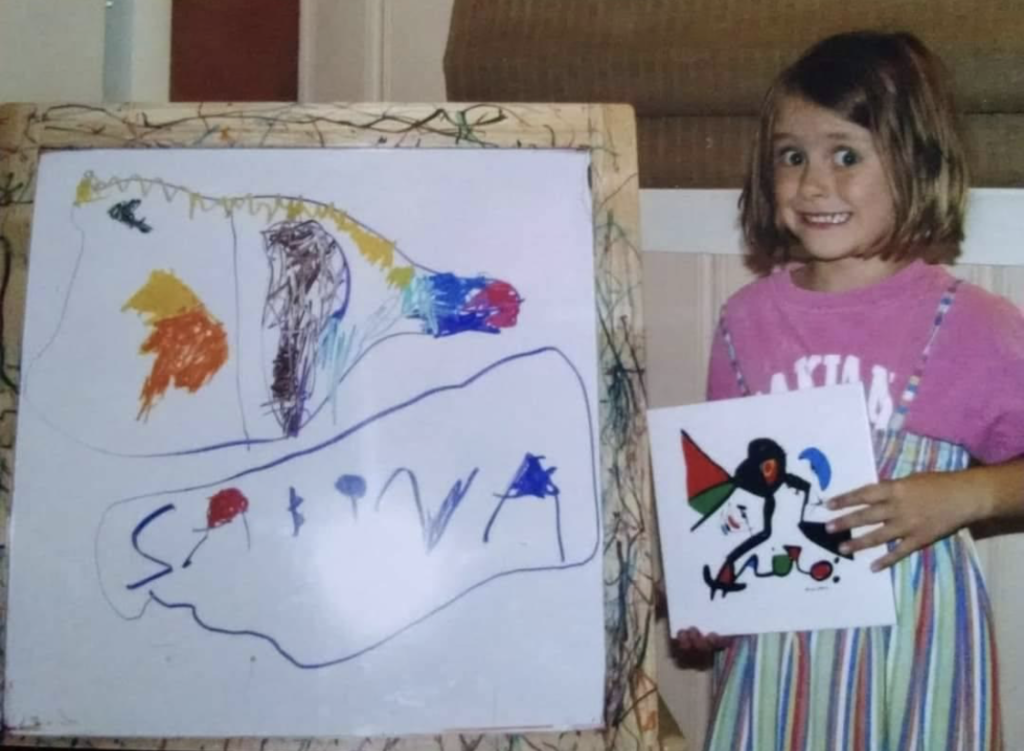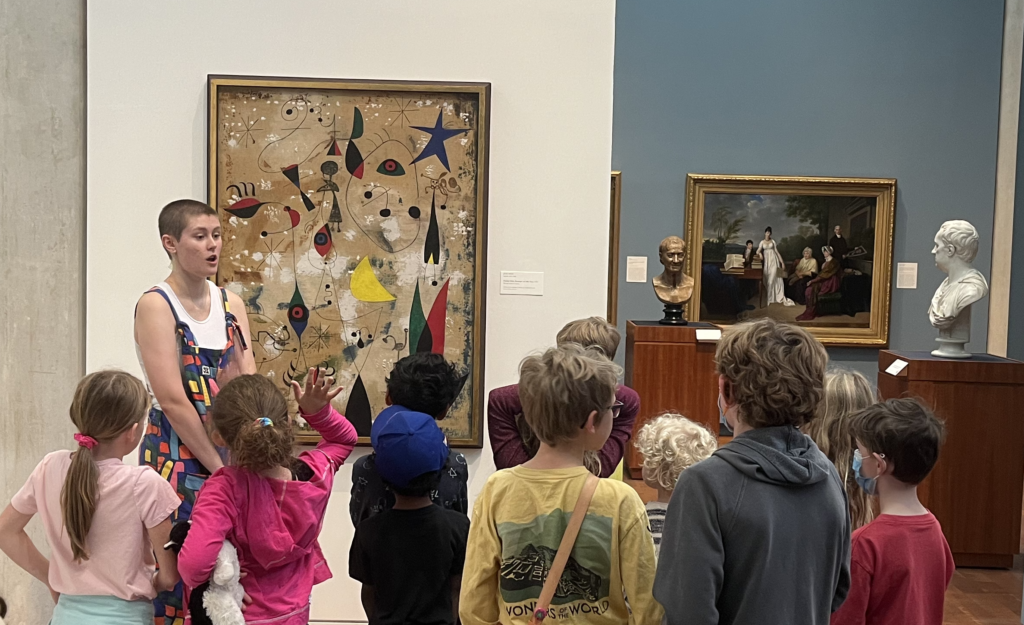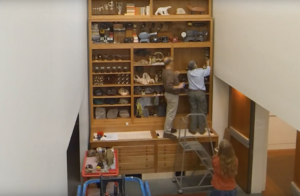Today’s post comes from Sabina Lopez-Jensen, Vassar Class of 2026 and Art Center Student Guide.
I have a favorite painting at the Loeb. Perhaps, like elementary school teachers, we are not supposed to have a “favorite.” But (like elementary school teachers) I guarantee that every guide has one. Mine is Joan Miró’s Painting (Birds, Parsonages, and Blue Star). And this is my love letter to it.
Miró reminds me of my Abu (short and anglicized for Abuelo), who sometimes gets so giddy when he visits his family back home in Madrid that he speaks English to his siblings and Spanish to his monolingual son-in-law. He’ll take any chance he can find to talk about Spain, meaning that I, somewhat against my will, know a lot about Spanish art. Because Dalí is too creepy as an artist and Picasso is too creepy as a person, Miró was an important facet of my childhood.
When I was four, I recreated his Kristianstads Museum Exhibition Poster, which we had on a ceramic hot plate, on the whiteboard in my basement. My mom, insistent that this recreation was a work of genius, snapped a photo of me posing with my artwork, in which my four-year-old smile and mismatched outfit were the real stars of the show. I obviously don’t remember drawing it, but I can see why my four-year-old brain liked its bright colors, formless shapes, and creative signature. My 19-year-old brain likes it for the same reasons.

So yes, I have personal reasons to like this artist, and therefore this painting. When I applied to work at the Loeb, I knew nothing more about art than what my Abu had imprinted on me about Spain as a child. During my first shift, I was relieved to see at least one artist that I could recognize without having to read the label. Miró’s style of abstraction has the gift of being easily identifiable. From the moment I saw the eyes in Painting, I knew exactly who had painted them. I didn’t know anything about the artist himself or how the painting was made, but I would recognize the images of my childhood anywhere, even without studying them closely.
And that’s the beauty of Miró: he’s accessible. Recognizable. He makes art that you don’t need any prior knowledge to understand, to love. I recently took a group of elementary students on a tour that focused on abstract art. Before I could even tell the students what the painting was called, they began to notice things.
“I see a face with long eyelashes”
“That looks like a ladybug!”
“Look at the little triangle guy!”
“I see music notes!”
We didn’t need to talk about the abstractionist movement or composition of the piece or what it all “meant.” The children looked at the painting as I once did. Beautiful shapes, accessible shapes. The kind of art that they could sketch out in Expo markers on a child’s easel. The kind of art that they’ll still love if they happen to work at a museum 15 years later.





